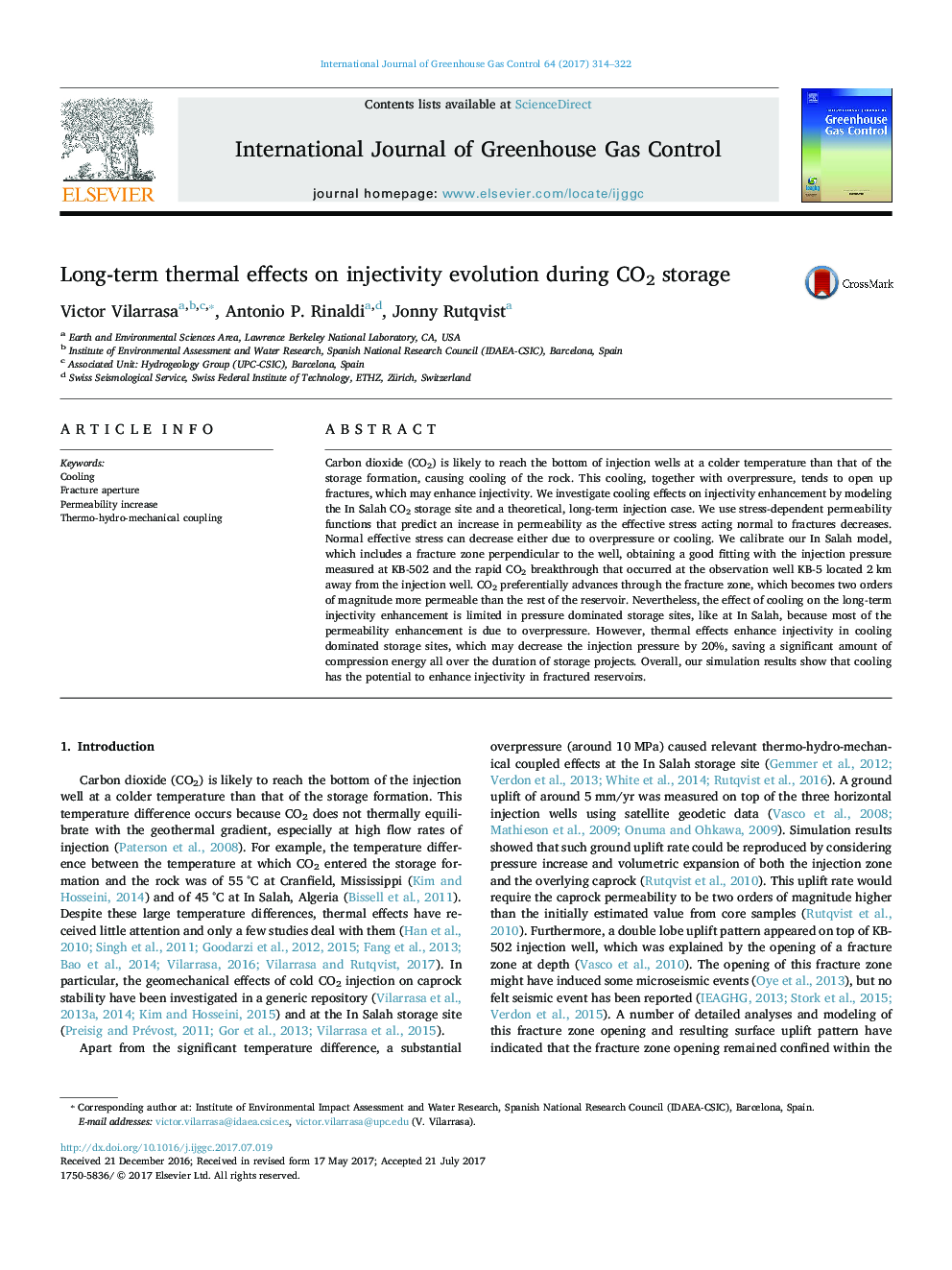| کد مقاله | کد نشریه | سال انتشار | مقاله انگلیسی | نسخه تمام متن |
|---|---|---|---|---|
| 5479068 | 1521955 | 2017 | 9 صفحه PDF | دانلود رایگان |
عنوان انگلیسی مقاله ISI
Long-term thermal effects on injectivity evolution during CO2 storage
دانلود مقاله + سفارش ترجمه
دانلود مقاله ISI انگلیسی
رایگان برای ایرانیان
کلمات کلیدی
موضوعات مرتبط
مهندسی و علوم پایه
علوم زمین و سیارات
فرآیندهای سطح زمین
پیش نمایش صفحه اول مقاله

چکیده انگلیسی
Carbon dioxide (CO2) is likely to reach the bottom of injection wells at a colder temperature than that of the storage formation, causing cooling of the rock. This cooling, together with overpressure, tends to open up fractures, which may enhance injectivity. We investigate cooling effects on injectivity enhancement by modeling the In Salah CO2 storage site and a theoretical, long-term injection case. We use stress-dependent permeability functions that predict an increase in permeability as the effective stress acting normal to fractures decreases. Normal effective stress can decrease either due to overpressure or cooling. We calibrate our In Salah model, which includes a fracture zone perpendicular to the well, obtaining a good fitting with the injection pressure measured at KB-502 and the rapid CO2 breakthrough that occurred at the observation well KB-5 located 2Â km away from the injection well. CO2 preferentially advances through the fracture zone, which becomes two orders of magnitude more permeable than the rest of the reservoir. Nevertheless, the effect of cooling on the long-term injectivity enhancement is limited in pressure dominated storage sites, like at In Salah, because most of the permeability enhancement is due to overpressure. However, thermal effects enhance injectivity in cooling dominated storage sites, which may decrease the injection pressure by 20%, saving a significant amount of compression energy all over the duration of storage projects. Overall, our simulation results show that cooling has the potential to enhance injectivity in fractured reservoirs.
ناشر
Database: Elsevier - ScienceDirect (ساینس دایرکت)
Journal: International Journal of Greenhouse Gas Control - Volume 64, September 2017, Pages 314-322
Journal: International Journal of Greenhouse Gas Control - Volume 64, September 2017, Pages 314-322
نویسندگان
Victor Vilarrasa, Antonio P. Rinaldi, Jonny Rutqvist,